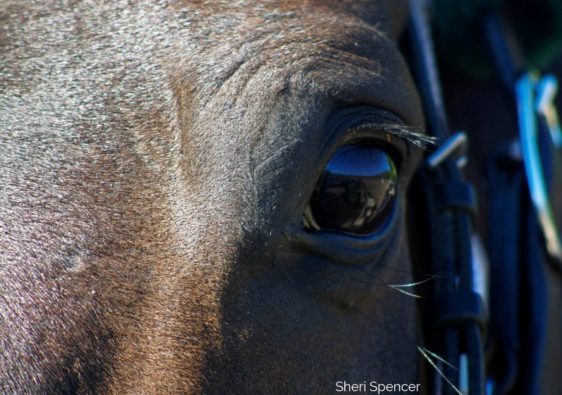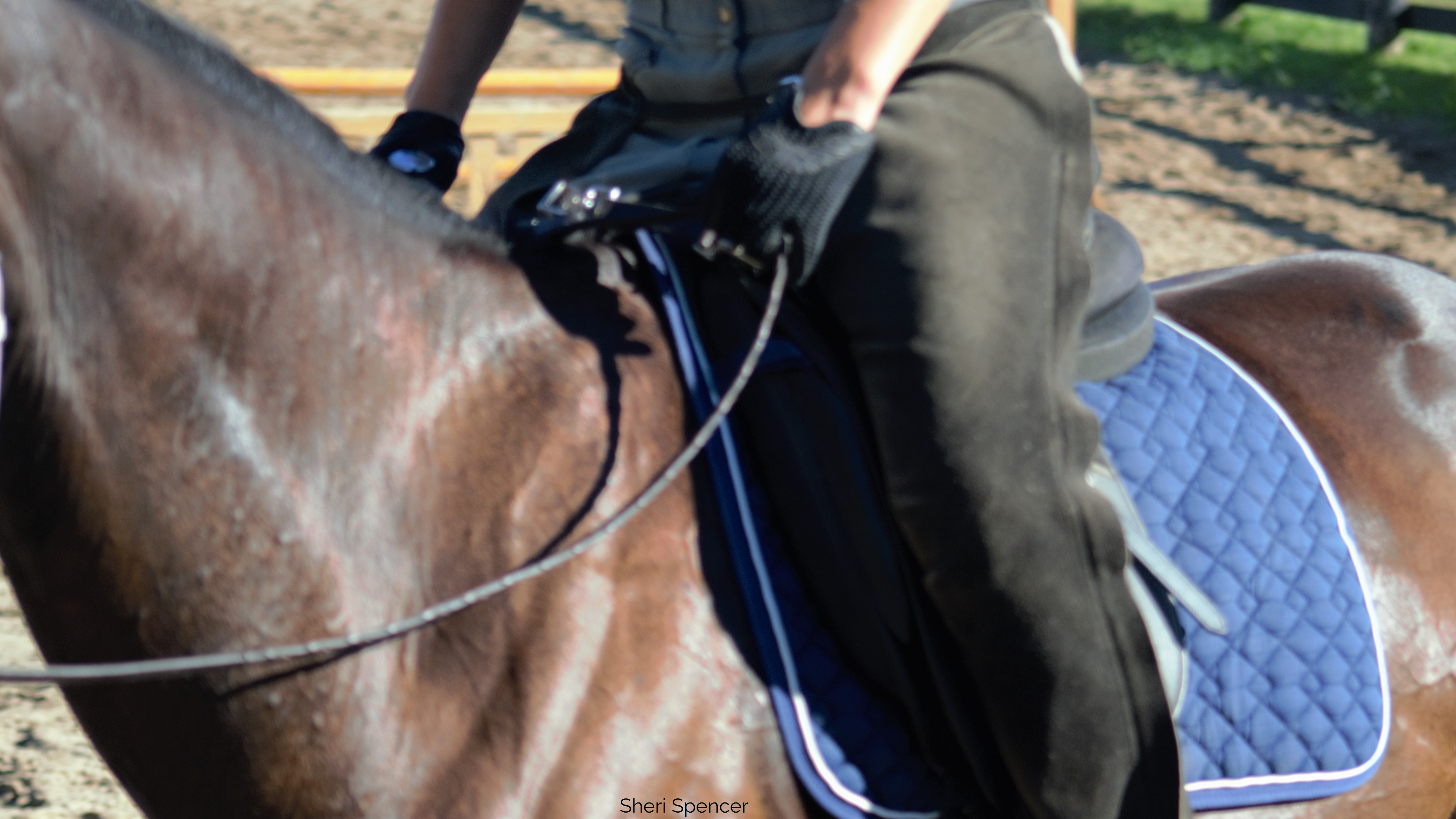I recently paid a visit to the tackshop to nab a few knicknacks, one of the chief items being a hoof moisturizer.
Mr. P has terribly dry and cracked feet. The rehabilitation for such things is arduous at best, but I’m hoping to at least reduce the peeling of the hoof wall if we can…. A blog for another day… 😛
While perusing the shelf, comparing prices and promises, I scanned over one promising “penetrating power” and gave the bottle a shake before reading it over. It was so liquidy it might have been water inside, and the “penetrating proof” was, according to the label, that “you could see it leak down between the nail holes, through the shoe and onto the floor.”
I have a few words on this before you make such a purchase for yourself (though if you did, that’s entirely up to you. Maybe it works. But….) :
1) “Penetration” in the sense of moisturizers is the ability of the product to absorb into the surface it is applied to, not by how quickly it succumbs to gravity or centrifugal forces. It contributes to both the duration and effectiveness of the product by how “deeply” it can influence the surface area. This is basically impossible to ascertain by reading the manufacturer promises, but familiarity with the ingredients is your best way to know. (More on that to come!) Failing that, “satisfaction guarantees or a refund” are nice to see, otherwise check for consumer reviews online. A general rule of thumb is: if it “sticks” where it is applied, it is more likely to penetrate where you want it. If it is runny, you cannot easily control where it goes and are that much more likely to waste it in the form of hoof-print shaped rings and puddles on the barn floor. So basically….
2) “Staying power” is just as important as “penetrative”… as in: it stays where you put it. Think of topical creams and how much easier they are to apply to cuts versus liquidy solutions that trickle all over, leaving a thin slimy layer everywhere instead of a thick layer where you actually want it.
3) The nails are the staying power of your more-often-than-not-expensive horse shoes. If you lubricate the nails with hoof moisturizer, you are making them that much easier to pull off.
And so, putting it all together, if we are moisturizing the feet of a shod horse, I would want the product applied away from nail holes (why soften the grip around the holes? – unless the feet are very brittle, but ask your farrier) and I would want the product to stay where I apply it and absorb into the hoof wall, rather than the barn floor… For a barefoot horse, I could apply it all over without worry as long as the product itself is safe for use on the heel, frog, etc or wherever I’m inclined to need it. I personally tend to steer clear of items that are advised against anything but the hoofwall, or caution “do not use on irritated skin” because if it can do any harm at all, I would rather spend my money on one of the many other products that do not.
And that is my product rant for the week! We’ll see how the one I picked works out and I’ll be sure to share if it does.



